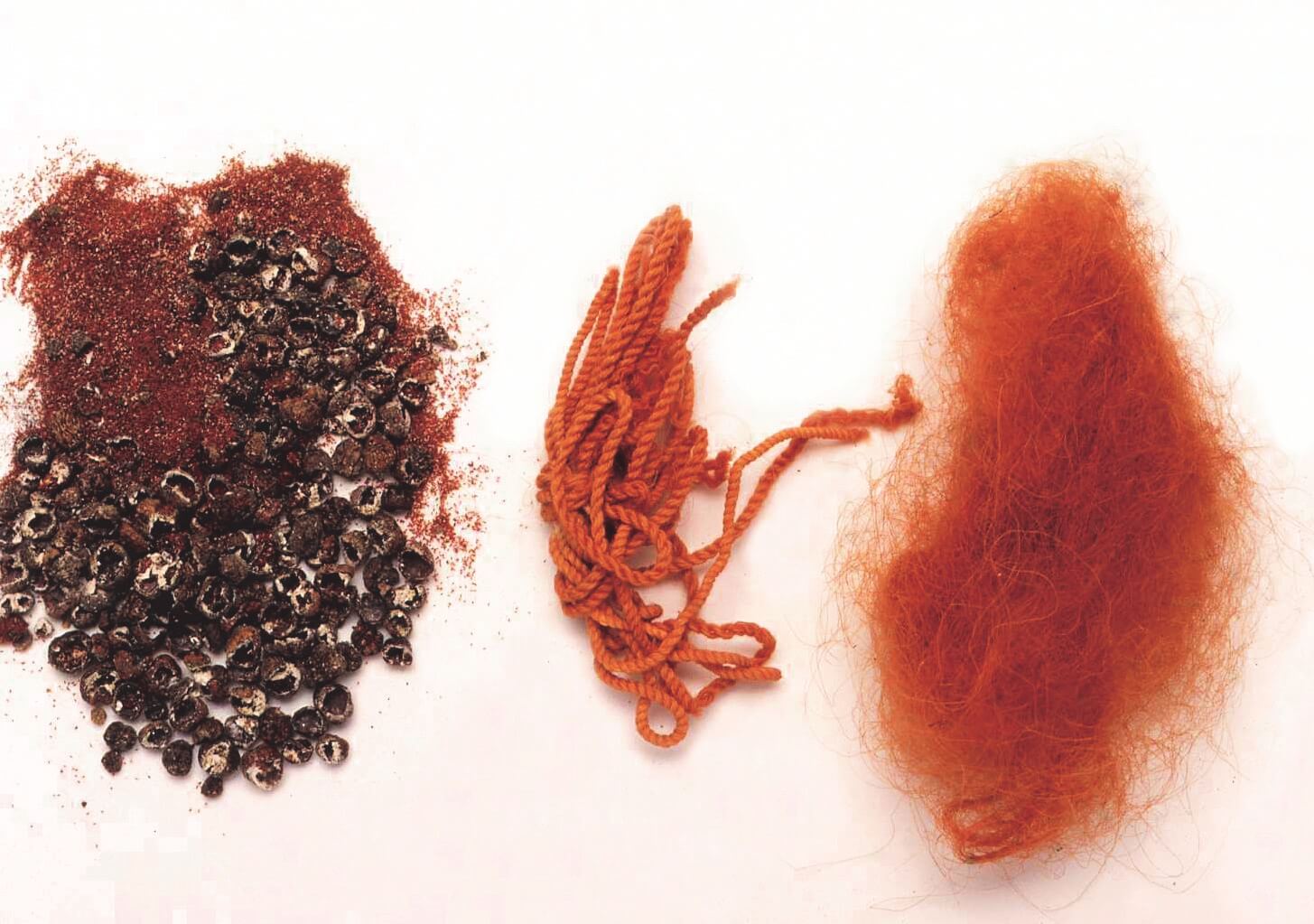Parashat Pekudei: The biblical scarlet worm, tola'at hashani

Was the shani dye produced from a non-kosher insect?
This time, for a change, we will take a look at biblical-biological realia. The second verse of our parasha states (Shemot 38:23): "אָהֳלִיאָב בֶּן-אֲחִיסָמָךְ לְמַטֵּה-דָן חָרָשׁ וְחֹשֵׁב; וְרֹקֵם, בַּתְּכֵלֶת וּבָאַרְגָּמָן, וּבְתוֹלַעַת הַשָּׁנִי, וּבַשֵּׁשׁ" "Oholiav son of Ahisamach, of the tribe of Dan, carver and designer, and embroiderer in techelet, argaman, and tola'at shani and in fine linen."
In parashat Teruma, Rashi explains that techelet is wool dyed green using a snail's blood, argaman is also dyed wool, and shesh is linen. Rashi does not comment on tola'at shani, however.
Tola'at shani is mentioned 25 times throughout the parshiyot dealing with the Mishkan (Teruma, Tetzave, Vayakhel, and Pekudei). It was used to dye the wool for the yeriyot, the tapestries of the Mishkan, the parochet, the avnet of the Kohanei hedyot, and the efod, choshen, and me'il of the Kohen Gadol. Tola'at shani is also mentioned as an ingredient in the preparation of the para aduma's ashes and for purifying lepers, among others things.
According to the Mishna, there was a lashon shel zehorit, a woolen string dyed with shani, that was hung from the door of the heichal on Yom Kippur. Another such string was used with the goat sent to azazel. When reaching the cliff in the desert, this string was tied to a rock on one end, and to the goat's horns on the other. When the goat reached its final destination in the desert, the woolen string in the heichal would turn white. This was a Divine sign that the Jewish People's sins were atoned (Yoma 6:6-8).
In Tanach, the shani is mentioned as an expensive dye, for example in Eshet Chayil: "for her whole household is dressed in shanim" (Mishlei 31:21). Later down the line in history, the shani dye was also used for medicinal purposes, as a segula, and as food coloring for certain dishes.
The verse in Yeshayahu (1:18) states: "Be your sins like shanim, they can turn snow-white; Be they red as tola, they can become like fleece.”
From the text's parallel structure, we can conclude that shani is red (generally rendered "crimson" or "scarlet" in traditional translations). But how is it produced?
As our original verse refers to the dye as tola'at shani, redered as the crimson worm, we can induce that this was a type of insect from which red dye was produced in ancient times. In Divrei Hayamim, it is called karmil (II Divrei Hayamim 3:14).
There are several poskim who believe that it does not make sense that the shani dye would be produced from a non-kosher insect, so they hold that the dye is plant-based (note that the same problem exists for both argaman and techelet). However, the Yerushalmi (Kila'im 9:1) states outright: "What is tola'at shani? Something with the spirit of life." The vast majority of the poskim hold accordingly. There was a similar color produced from a plant called pu'ah, just as techelet had a similar, plant-derived parallel from the woad plant, Isatis tinctoria, which produces an indigo dye (this dye is termed istis by the Mishna [Megillah 4:7] and is used by the Karaite community to produce techelet today, but is rabbinically prohibited [Bava Metziva 61a]).
Zohar Amar, in his book, Tracking the Scarlet Dye of the Holy Land, identifies tola'at shani as the Kermes oak coccoid (Kermes echinatus). This scale insect attaches itself to the bark, sucks at its trunk and excretes a substance that covers it and serves as a protective scale. The female insects and eggs would be gathered, dried, ground into flour, and cooked. To dye fabrics, it would first have to be soaked in mordant such as alum, and only then fabrics would it be dipped into the red-orange extraction. In 2000, Prof. Zohar Amar gathered such coccoids from the southwestern Shomron area, dried them, and produced a dye using the traditional methods. It is possible that in the past, these coccoids were cultivated for commercial purposes. According to Amar's findings, it turns out that shani is actually reddish-orange, not a bright scarlet, as one might think. This finding is compatible with the account of Josephus Flavius, who described the tola'at shani dye used in the Second Temple period as having a fiery hue.
Note that today, too, there is commercial use of similar scale insects to produce red pigment, such as the American cochineal (Dactylopius coccus) used for red food coloring. It is also referred to as carminic acid and E120, and found in various foods (also widely used for cosmetics). The poskim discuss its status vis-à-vis kashrut. Even though it is first dried and ground to dust, most of today's poskim are stringent in this regard.
For a comprehensive discussion, see: Prof. Zohar Amar, Tracking the Scarlet Dye of the Holy Land, 5767-2007, Neve Tzuf, Israel.


Shani coccoids and eggs and wool and yarn dyed reddish-orange.
Photo courtesy of Prof. Zohar Amar




